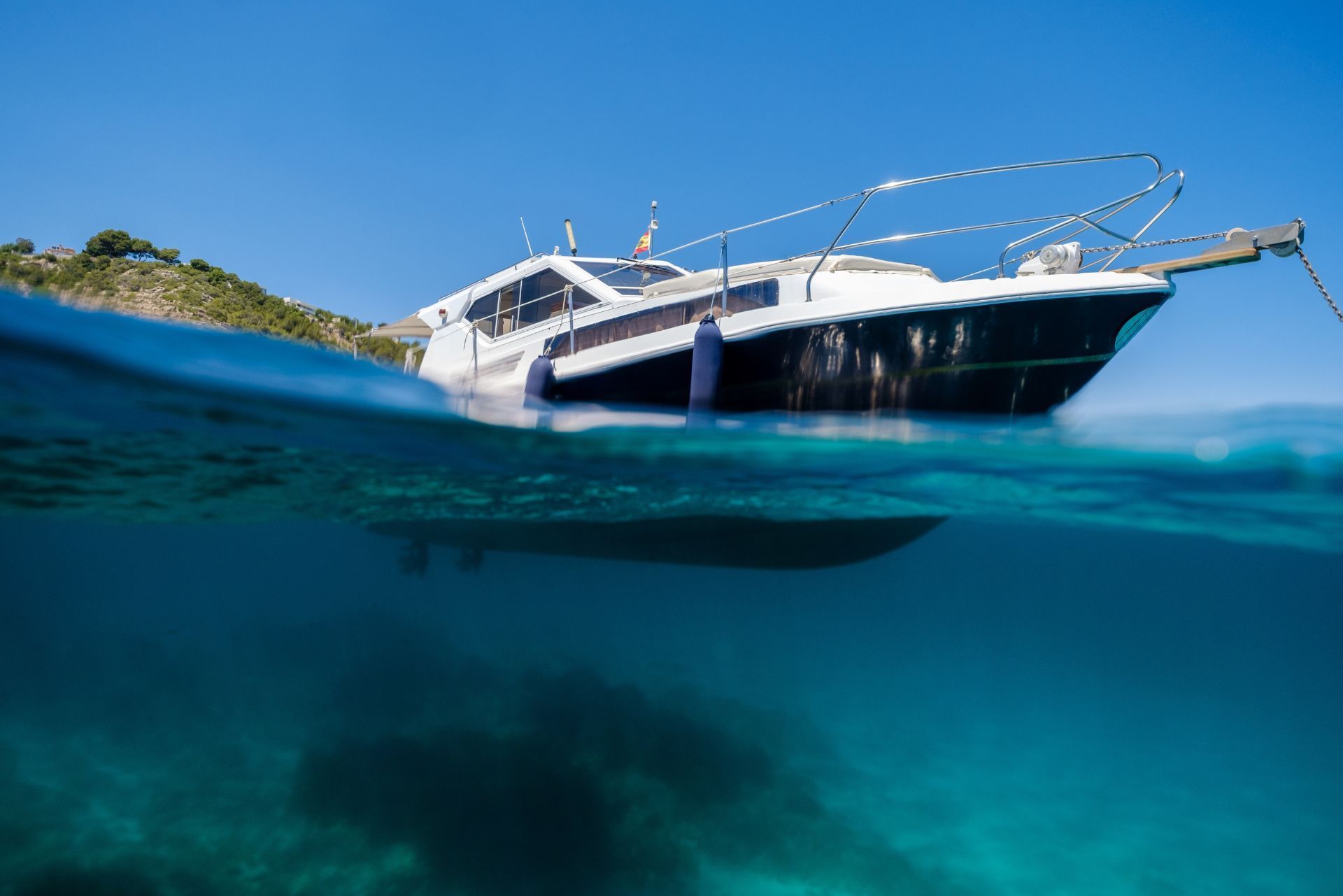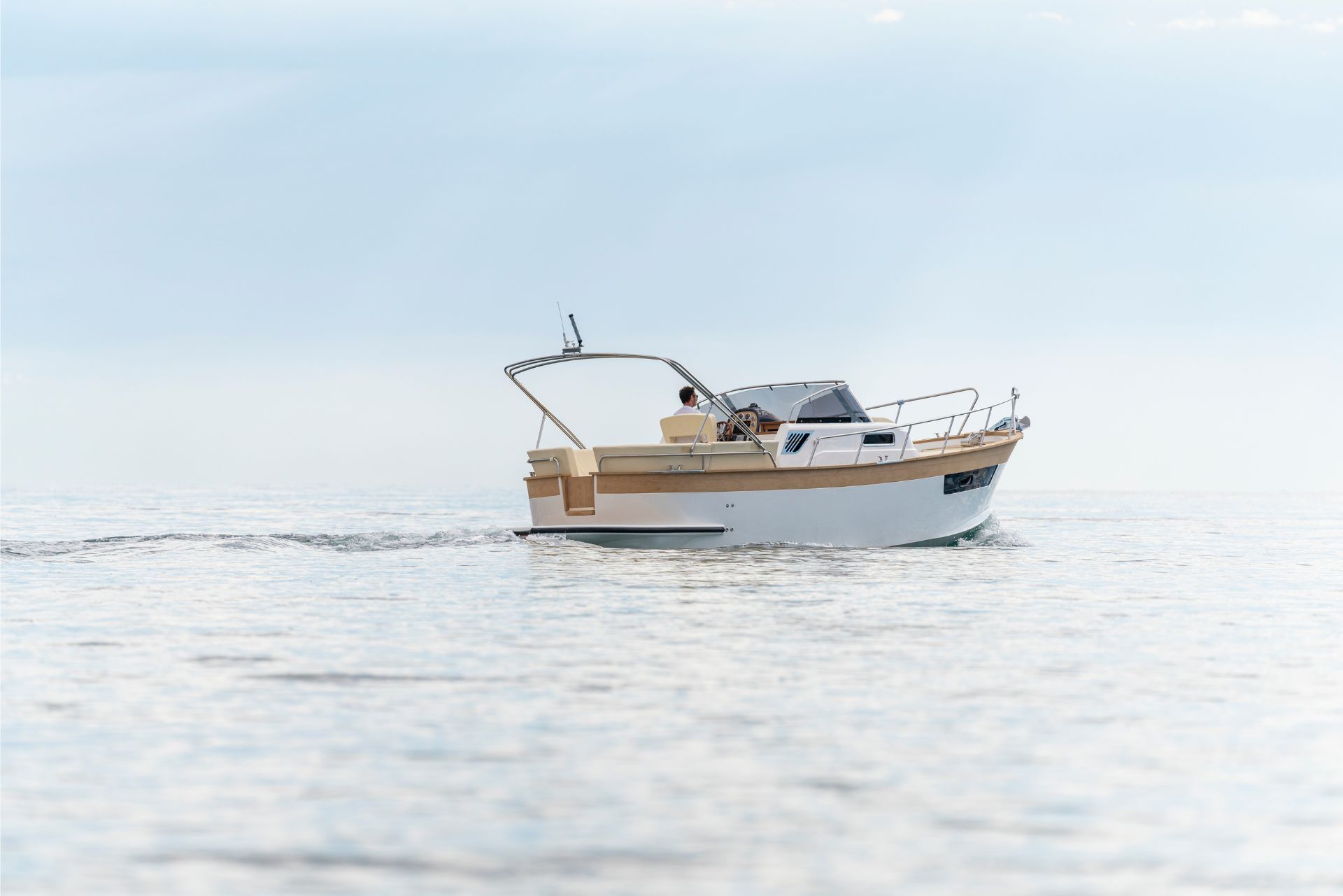Top 3 Recommended Policies

By: David Graves
Licensed Personal Insurance Specialist
425-320-4280
The Boating Landscape in Washington State
Washington’s 3,000 miles of shoreline, 8,000 lakes, and iconic waterways such as Puget Sound and the Columbia River make it one of the busiest recreational boating regions in the United States. According to the Washington State Parks Boating Program, more than 227,000 vessels were registered in 2023, a number that has risen steadily since the pandemic-related surge in outdoor recreation. With this growth has come increased congestion at popular marinas and boat launches, amplifying the importance of comprehensive risk management on the water.
The state’s diverse boating venues—from fog-laden coastal passages to narrow alpine lakes—create highly variable conditions. Each year, the U.S. Coast Guard reports roughly 100 recreational boating accidents in Washington, accounting for dozens of injuries and millions of dollars in property damage. Those statistics underscore why boat insurance is much more than an administrative checkbox; it is a financial safety net tailored to Washington’s unique mix of saltwater, freshwater, and rapidly changing weather.
In addition to the inherent risks associated with boating, the environmental factors in Washington State also play a significant role in shaping the boating experience. The region's temperate climate can lead to sudden shifts in weather, with fog rolling in unexpectedly or storms brewing rapidly, particularly in the fall and winter months. This unpredictability necessitates that boaters remain vigilant and well-prepared, ensuring they have the right gear and knowledge to navigate safely. Moreover, the rich biodiversity of the waters, including salmon runs and marine wildlife, adds an extra layer of excitement for recreational boaters, who often find themselves sharing the water with seals, otters, and even the occasional orca. This vibrant ecosystem not only enhances the beauty of the boating experience but also highlights the importance of responsible boating practices to protect these natural habitats.
Furthermore, the state's commitment to promoting safe boating practices is evident through various educational programs and initiatives aimed at both novice and experienced boaters. Organizations like the Washington State Parks Boating Program offer courses on navigation, safety equipment, and environmental stewardship, ensuring that boaters are equipped with the knowledge they need to enjoy the waterways responsibly. The emphasis on safety is particularly crucial given the increasing popularity of water sports such as wakeboarding and kayaking, which attract a diverse range of participants, including families and thrill-seekers alike. As more people take to the water, fostering a culture of safety and respect for the environment becomes essential to preserving the beauty and accessibility of Washington's incredible aquatic playground.

Is Boat Insurance Mandatory in Washington?
Washington does not impose a universal law requiring recreational boat owners to carry insurance. However, that fact can be misleading. Many marinas, lenders, and public moorage facilities demand proof of liability coverage before they will allow a vessel to dock, refuel, or obtain financing. For boaters who venture into neighboring Canadian waters, liability insurance is effectively mandatory because Canada requires proof of at least CAD 100,000 in coverage for visiting vessels.
The bottom line: while the state itself may not mandate insurance, practical realities often make coverage a prerequisite for access, financing, and legal compliance in adjacent jurisdictions. Skippers who depend solely on Washington’s leniency can end up shouldering significant out-of-pocket liabilities.
State Registration vs. Insurance Requirements
All motorized boats and most sailboats over 16 feet must be registered with the Washington Department of Licensing, yet registration alone offers no financial protection. Insurance fills that gap by addressing third-party liability, property damage, medical costs, and environmental responsibilities that arise from boating mishaps. Without insurance, boat owners risk facing hefty financial burdens in the event of accidents, which can include damage to other vessels, injuries to passengers, or even environmental cleanup costs associated with fuel spills.
Moreover, the type of coverage a boat owner chooses can significantly impact their financial security on the water. Policies can vary widely, from basic liability coverage to comprehensive plans that include protection against theft, vandalism, and natural disasters. Some boaters may also consider additional endorsements, such as coverage for personal effects on board or towing assistance. Understanding the nuances of these policies is essential for any responsible boat owner, as it ensures that they are adequately protected against the myriad risks associated with boating activities, especially in a state known for its diverse waterways and unpredictable weather conditions.
Core Components of a Washington Boat Insurance Policy
At its heart, a boat insurance contract mirrors auto insurance—but with language and extensions crafted for marine environments. Understanding each core component is crucial to building a policy that matches the realities of Northwest boating.
The major sections below outline the protections typically included in a standard policy, with notes on regional considerations such as saltwater corrosion and tidal hazards.
Liability Coverage
Also called “Protection & Indemnity,” liability coverage pays for bodily injury and property damage the policyholder causes to others. In crowded waterways like Lake Union or the San Juan Islands, even a minor collision can lead to five-figure repair bills on fiberglass hulls and personal injury claims. Most Washington insurers recommend a minimum of $300,000 per occurrence, although many boat owners opt for $500,000 or $1 million limits to guard against litigation expenses.
Civil courts in King and Snohomish Counties routinely award high damages for negligence cases. Adequate liability limits shield personal assets such as a primary residence or retirement accounts from being seized to satisfy a judgment.
Physical Damage Coverage
Often divided into “Hull” and “Machinery,” this section insures the vessel itself against perils like collision, sinking, fire, theft, vandalism, and lightning. Policies are written on either an Agreed Value basis—payout equals the insured value stated on the declarations—or an Actual Cash Value basis, which deducts depreciation. Agreed Value usually costs more, but it avoids disputes about depreciation after a total loss.
Because Washington waters contain floating logs, kelp beds, and submerged rocks, insurers may include a mandatory deductible for striking submerged objects. Boaters who frequent coastal routes should verify that saltwater corrosion damage is not excluded or can be added via endorsement.
Medical Payments Coverage
This no-fault provision pays for minor medical bills incurred by the insured, family members, or guests injured aboard the vessel, regardless of who is at fault. Typical limits range from $1,000 to $10,000 and can defuse smaller claims before they escalate to litigation.
Uninsured Boater Coverage
Because insurance is not compulsory, many boaters navigate without liability protection. If an uninsured operator injures the policyholder or damages the policyholder’s vessel, this clause steps in to compensate for lost wages, medical expenses, and other damages up to the selected limit.
Optional Protections Worth Considering
No two boats are alike, and optional endorsements allow policyholders to fine-tune coverage to match specific use cases. While these add-ons increase premiums, they often cost pennies on the dollar compared with the losses they offset.
Below are endorsements commonly purchased by Washington boat owners who cruise beyond the dockside cocktail circuit into longer voyages or high-risk environments.
Towing and Assistance
On-water towing services around Puget Sound and the Columbia River routinely charge $250 per hour, with multi-hour salvages easily topping $2,000. A towing endorsement or a membership in a recognized towing network reimburses for emergency breakdowns, battery jumps, and soft groundings.
Personal Effects Coverage
From high-end fishing gear to inflatable paddleboards and drone cameras, personal property onboard can rival the value of the boat. This endorsement insures personal items against theft or damage, both afloat and while stored ashore.
Environmental Liability and Fuel Spill Endorsements
Washington’s Department of Ecology can levy hefty fines—up to $10,000 per day—for fuel or oil spills. An environmental endorsement covers cleanup costs and third-party damage from accidental discharges, a critical safeguard for diesel-powered vessels and those with large fuel tanks.
How Much Does Boat Insurance Cost in Washington?
Premiums vary widely based on vessel type, operator history, and cruising area. As a broad benchmark, annual premiums tend to fall between 1% and 2% of a boat’s insured value. A $40,000 bowrider could therefore cost roughly $400 to $800 per year to insure, while a $200,000 coastal cruiser might command $2,000 to $4,000 annually.
Saltwater exposure, theft rates in moorage areas, and the state’s occasionally violent weather patterns drive rates higher than landlocked regions. Conversely, completion of a state-approved safety course or installation of an automatic fire-suppression system can trim costs noticeably.
Premium Range for Popular Vessel Types
• Personal watercraft (PWC): $200 – $450 per year
• 18–22 ft ski/wake boat: $350 – $700 per year
• 25–30 ft sailboat: $450 – $900 per year
• 30–40 ft motor yacht: $1,500 – $3,500 per year
Key Rating Factors Insurers Consider
1. Experience and claims history: A clean record of at least three boating seasons can lower rates by up to 15%.
2. Navigational limits: Policies restricted to inland lakes often run cheaper than “coastal plus inland” endorsements.
3. Storage and moorage: Locked dry storage attracts fewer theft claims than an open slip, translating to premium credits.
4. Lay-up period:
Opting for a winter lay-up endorsement, which suspends navigation from November through March, can reduce annual costs by 5% to 10%.
Tips for Reducing Your Premium Without Sacrificing Protection
Cost containment need not come at the expense of robust coverage. The following strategies deliver meaningful savings while preserving essential safeguards.
By combining two or more of these approaches, some Washington boaters report trimming premiums by 20% or more, all without diminishing liability limits or hull values.
Complete a Certified Boating Safety Course
The state already requires operators born after January 1, 1955 to carry a Boater Education Card, but advanced safety certifications—such as the U.S. Power Squadrons Seamanship Course—can unlock additional credits.
Bundle Policies With the Same Insurer
Insurers often grant multipolicy discounts when homeowners, auto, and umbrella coverage sit under one roof. Bundling can shave 10% to 25% off the boat premium and occasionally boosts liability limits automatically.
Install Approved Safety and Anti-Theft Gear
Automatic fire extinguishing systems, high-water alarms, GPS tracking devices, and propeller locks earn protective-device discounts. Not only do these tools safeguard life and property, but they also signal to underwriters that the owner is a lower-risk operator.
Securing the right policy can be straightforward when approached methodically. The process below streamlines shopping and helps avoid coverage gaps.
Starting early—ideally a month before closing on a vessel purchase—prevents last-minute scrambling, ensures compliance with lender and marina requirements, and allows time for risk mitigation steps that influence premiums.
Gather Vessel and Usage Details
Insurers will request the hull identification number (HIN), make, model, length, engine specifications, purchase price, storage method, planned cruising area, and average annual operating hours. Providing complete, accurate information accelerates quote turnaround and keeps underwriting questions to a minimum.
Compare Quotes From Multiple Providers
Market differences can be dramatic: the same 28-foot sailboat might cost $600 through one carrier and $1,100 through another, with nearly identical limits. Independent agents and online comparison tools reveal these discrepancies and create leverage for negotiating better deductibles or additional endorsements.
Review Policy Wording Before Signing
Pay special attention to exclusions for wear and tear, gradual deterioration, manufacturer defects, and consequential damage. Confirm that the navigation territory aligns with planned voyages—particularly if venturing into Canadian or Alaskan waters—and that salvage, wreck removal, and pollution coverage limits meet local regulatory caps.
What To Do If You Need to File a Claim
Accidents are stressful, but a clear roadmap minimizes downtime and the risk of claim denial. Familiarity with the steps below helps boat owners move swiftly from incident to resolution.
Most carriers provide 24/7 claims hotlines; prompt reporting within 24 or 48 hours is often a contractual obligation, and delays can jeopardize coverage.
Document the Incident Immediately
Photograph damage from multiple angles, capture GPS coordinates, record witness statements, and log weather conditions. Digital documentation creates an irrefutable timeline and bridges gaps if physical evidence later disappears.
Notify Your Insurer Promptly
Provide a concise verbal or written description, then forward the photographs, police report, or Coast Guard incident number. Timely notification enables the insurer to arrange inspections and issue repair authorizations quickly.
Cooperate With Adjusters and Repairs
Allow surveyors or claims adjusters full access to the vessel. Retain receipts for emergency repairs, towing, and storage, and submit them for reimbursement. Once the insurer approves a repair estimate, using networked marine repairers can accelerate payment cycles and warranty workmanship.

Frequently Asked Questions About Washington Boat Insurance
Even experienced captains encounter gray areas regarding crossover coverages and territorial nuances. The Q&A below addresses recurring concerns voiced by new and veteran boat owners alike.
While individual policies vary, these answers reflect prevailing standards among the state’s leading marine insurers as of mid-2024.
Does Homeowners Insurance Cover My Boat?
Most homeowners policies extend minimal coverage—typically $1,000 to $2,500—for small, non-motorized craft stored on the insured property. Once a boat exceeds 26 feet, carries an engine over 25 horsepower, or leaves the premises, coverage usually evaporates. A standalone boat policy is essential for meaningful protection.
Is My Boat Covered in Canada or Alaska?
Many Washington policies automatically include the U.S. and Canadian coastal waters up to 100 nautical miles offshore, but exclusions appear for Alaska’s more remote regions or Pacific crossings. Always verify the “navigation warranty” and obtain a trip endorsement if planning extended cruises beyond standard limits.
Are There Special Rules for Personal Watercraft?
PWCs such as Jet Skis and Sea-Doos face higher accident rates and theft claims. Some insurers require operators to be at least 18, impose lower liability limits, or mandate storage in locked facilities. Premiums for PWCs reflect these heightened risks and often incorporate a separate deductible for engine damage caused by water ingestion.
Final Thoughts
Washington’s breathtaking marine playground promises adventure, but the same elements that thrill recreational boaters can also create financial hazards. Comprehensive boat insurance transforms unpredictable risks—from a submerged log strike near Bainbridge Island to a fuel spill in Lake Washington—into manageable, predetermined costs.
By understanding legal nuances, selecting appropriate core and optional coverages, and leveraging premium-reduction strategies, boaters can safeguard their investment and enjoy the Evergreen State’s waters with confidence. Whether navigating misty fjords at dawn or hosting a summer evening cruise, a well-built policy ensures that unforeseen events become temporary inconveniences rather than financial catastrophes.

